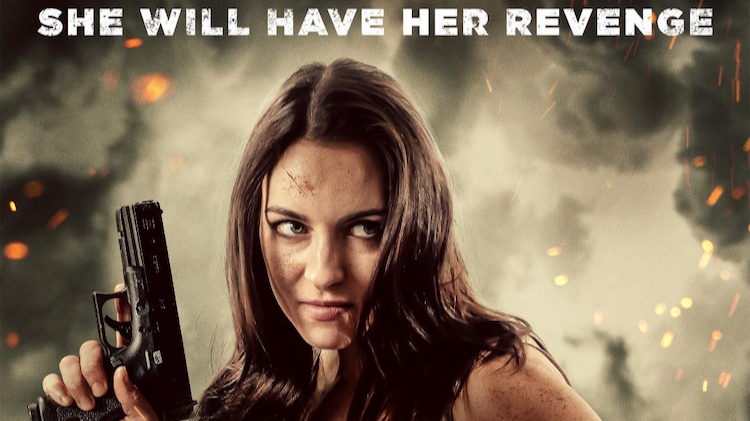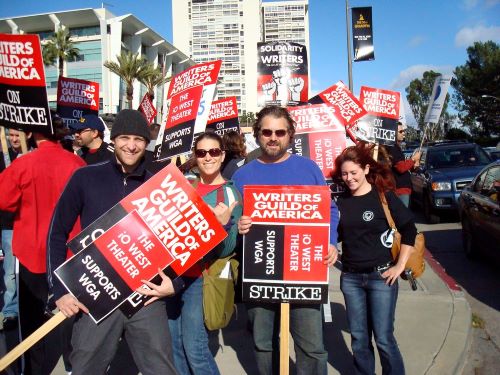
The Hollywood strikes by actors and writers undercut movie publicity for new releases — since talent ordinarily publicize their films — and more ominously threaten to push back normal film flow already upended by the pandemic.
The actors SAG-AFTRA work stoppage started July 14, which augments the May 2 beginning of the Writers Guild of America walkout. The strikes impact production of theatrical films and top TV programs. Content finished in the pipeline is not directly impacted, except for talent ceasing publicity in support of premieres.
Press interviews of famous talent are a bedrock of movie publicity (think movie stars on couches chatting in TV talk shows) and making promotional appearances at events like the mammoth Comic-Con fanboy convention and splashy film premieres. Most TV talk shows were shut down by the writers’ walkout, so those venues are unavailable as long as writers are striking.
Elsewhere, premieres of “Barbie” and “Oppenheimer” suffered because actors and writers did not attend due to the strike. In some cases, people not on strike won’t cross picket lines, so live events for marketing are fraught with uncertainty.
A publicist for Uncorked Entertainment’s indie film “I Am Rage” wrote journalists earlier this month that actors are “rightfully no longer available for your interviews, as I’m sure you’d understand. We do however have director” who will speak. “I Am Rage” (image above) is scheduled for streaming and DVD release Aug. 1.
Film distributors such as Hollywood’s five major movie studios are expected to rely more heavily on paid advertising such as TV commercials and also dredge up recordings of star talent promoting.
On paid advertising, Warner Bros. Pictures, which has the new “Barbie” theatrical, had bumped up paid advertising earlier this year to promote “The Flash” when the star of the comic book adaptation Ezra Miller was an unsuitable face of the movie. Miller drew unwanted bad publicity for off-screen misconduct.

Marketing researcher iSpot estimates Warners spent a lofty $31.3 million on “The Flash” TV commercials, versus $24.3 million in TV media paid by Disney for “Guardians of the Galaxy Vol. 3” and $12.9 million for “Elemental”; Paramount $17.2 million for “Transformers: Rise of the Beasts”; and Sony Pictures just $10.9 million for animated “Spider-Man: Across the Spider-Verse.” The latter films with low paid-advertising had a lot of outside tie-in promotion partners contributing media tonnage.
With actors not doing publicity, Paramount can dredge up an April Q&A at a cinema convention where Leonardo DiCaprio interviewed renowned film director Martin Scorsese about their “Killers of the Flower Moon.” The R-rated historical drama is scheduled for Oct. 6 release.
What’s lost is the ability to set up a current interview of appearance; those televised chats are magnets for consumers with stars on sofas talking about derring-do during production and sharing person insights, dropping plugs for their movies along the way. Many TV talk shows ceased production because of the writers’ strike, but TV news and print are not impacted.
“Whenever film companies have the leverage,” says the third edition of academic/business book “Marketing to Moviegoers,” “they negotiate provisions into the talent employment contract that require talent to participate in specific publicity efforts.” It’s also an industry custom for star talent to fit into a publicity campaign when their project is about to be released.
Another line of publicity hurt are film festivals and aficionado gatherings like Cinema-Con, where special effects, cartoonists, directors (not on strike), producers and other collateral are expected to take larger roles in the spotlight.
The publicity hype machine will restart immediately once there’s a settlement, but the longer lasting impact is interruption of producing new content — the industry pipeline — that will take months to restart. At risk is cinema’s steady revival from the pandemic closures, though perhaps just stretching out its rebound.
Corporate credit rating agency Moody’s Investors Service speculates that the ultimate settlement will cost Hollywood employers another $450 million-$600 million annually in additional routine expenses, not including any losses from the content pipeline running low for a time. Business consultancy PwC predicted cinema boxoffice would return to pre-pandemic levels by 2025, in a June forecast issued before the actors strike the following month. That comeback timeline is now under threat.
For Hollywood employers, the strike creates a short-term financial benefit by artificially reducing spending on new content. For example, Netflix — which like the Hollywood studios is a target of the strikes — raised its free cash flow forecast to $5 billion for this year, from $3.5 billion because of far less spending on producing original content.
But any dip in spending on making new content will be followed by higher spending once talent goes back to work. Wall Street analysts estimate Netflix is better positioned than rivals like Walt Disney Co., which operates No. 2 streaming platform Disney+, because Netflix stockpiles more than rivals and relies more on its foreign-made content. Content originated overseas is not caught up in the Hollywood labor impasse. Most impacted are TV channels that follow traditional autumn premiere calendar, since returning TV series didn’t start making new episodes in spring due to the strikes.
On July 18, the SAG-AFTRA granted exemptions (waivers) for 39 independent projects to go into production during the strike. Independents mostly make small-budget projects. The major-studio films are typically not granted such waivers because the majors control the employer negotiating entity with whom labor is at an impasse.
Former studio chief Barry Diller frets the Hollywood labor strife, pandemic aftermath and disruptive video streaming revolution are a “perfect storm. …These conditions will potentially produce an absolute collapse of an entire industry.” Diller says the doomsday scenario becomes a real threat if the strikes drag into next year.
The issues in the strike are downstream residuals payments to talent for streaming content, which doesn’t follow the sequential of legacy media. Streamers play their content worldwide and typically don’t license to outsiders, so there’s no cable run in Germany or broadcast TV play in Argentina that would trigger traditional residuals.
Interestingly, Hollywood’s third largest talent union — the Directors Guild of America — reached a settlement with employers. Directors, actors and writers unions traditionally follow identical patterns for basic pay. But carving out new residuals — those downstream payments for reruns — doesn’t fit the pattern template.
Hollywood major studios poor-mouth the business saying the cost of diversifying into streaming is astronomical. Walt Disney racked up $10 billion in losses on its streaming platforms since 2019, mostly from producing originals. Labor unions scoff, noting streaming losses are expected in a launching a new business, content produced will spinoff money for years and red ink doesn’t deter high pay for executives that unions seethe is excessive.
Artificial intelligence (AI) is also a worry often cited in the press, but is in its infancy and not completely understood. Labor worries that so-called generative AI computer tech will appropriate specific actors or create background talent images, costing jobs. Employers don’t want to agree to limitations that could hurt them later, including from overseas competitors that are not constrained.
The two strikes impact theatrical films and TV programs mostly in primetime. Not involved are TV commercials, TV daytime, sports coverage and live theater that are in the jurisdiction of different contracts and, in some cases, different unions.
Related content:
Leave a Reply